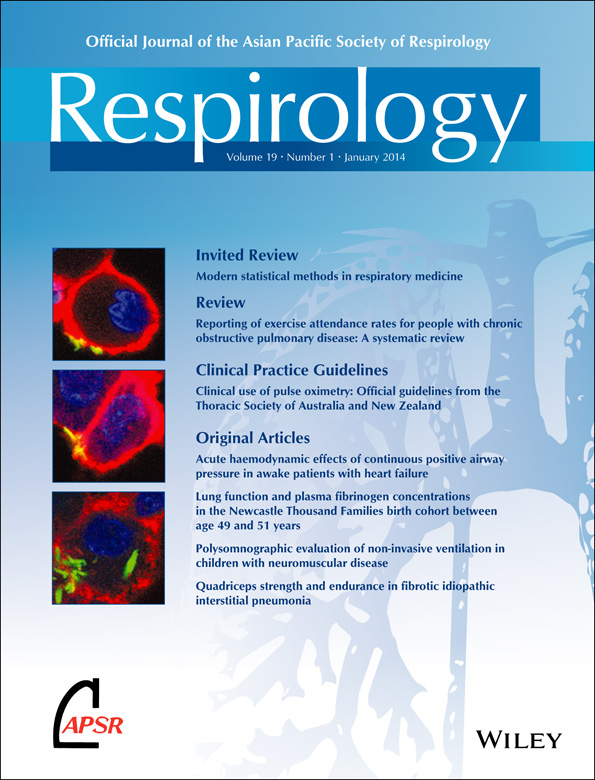Comparison of performance status with peak oxygen consumption in operable patients with non-small-cell lung cancer
Abstract
Background and objective
In this era of increasing options for treatment of ‘surgical’ lung cancer patients, preoperative physiologic assessment of accurate patient selection is becoming more important. The variability in an objective measure of cardiorespiratory fitness (peak oxygen consumption (VO2peak)) across performance in operable non-small-cell lung cancer (NSCLC) patients enrolled in the Cancer and Leukemia Group B trial was compared.
Methods
Using a cross-sectional design, 392 NSCLC patients underwent an incremental cardiopulmonary cycling exercise test to symptom limitation with expired gas analysis to determine VO2peak. Performance status (PS) was assessed using the Eastern Cooperative Oncology Group (ECOG) tool.
Results
There was a significant decrease in VO2peak across increasing ECOG categories (P < 0.0001). However, there was a large range in VO2peak for any given ECOG category with overlap between categories (ECOG 0: 5.0–31.5 mL/kg/min; ECOG 1: 4.3–24.8 mL/kg/min; ECOG 2: 8.9–21.9 mL/kg/min; ECOG 3; 3.3–11.7 mL/kg/min).
Conclusions
PS scoring systems do not provide a sensitive measure of functional status. Objective measures such as VO2peak may be a useful in the clinical management of oncology patients.




